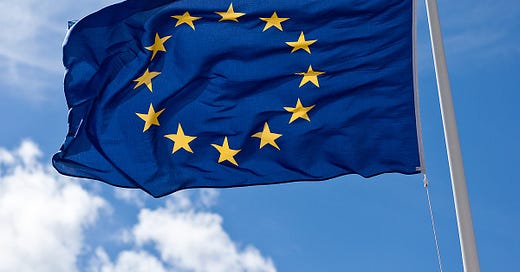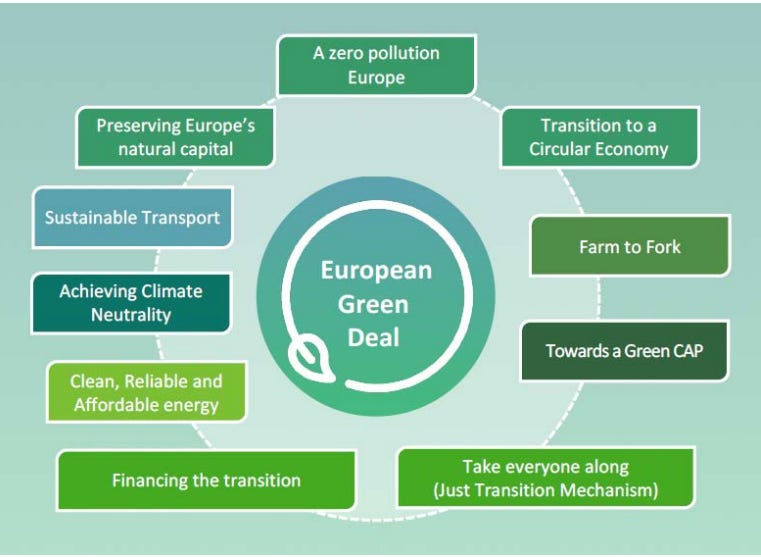A Guide to the EU Taxonomy
A (Really) Brief Overview of the European Union’s Taxonomy Regulation
The European Union’s Taxonomy Regulation spans over 550 pages, with additional materials expected as the regulatory landscape evolves. While it may seem daunting, the EU Taxonomy is expected to help create a standardized approach to identifying and promoting environmentally sustainable economic activities. As the EU works toward the goal of becoming net zero by 2050, this regulation acts as a guiding framework, offering clarity to investors, businesses, and policymakers alike.
What is the EU Taxonomy?
In simple terms, the EU Taxonomy is a classification system designed to identify and define economic activities that are considered environmentally sustainable. Its goal is to prevent greenwashing and direct investments towards projects and companies that contribute to the EU’s sustainability and climate goals. As such, the Taxonomy is not just a tool for environmentalists or policymakers; it is particularly relevant to investors, financial institutions, and businesses, who can use the Taxonomy to assess whether their investments or operations align with the EU's green objectives.
The Taxonomy is closely tied to the European Green Deal, which aims for net-zero greenhouse gas emissions by 2050. By guiding investments towards environmentally sustainable activities, the Taxonomy helps ensure that the EU meets its climate and environmental targets while also supporting economic growth and job creation in the green economy.
In addition to supporting the EU's climate goals, the Taxonomy aims to reduce the risk of greenwashing—a practice in which companies or products falsely claim to be environmentally friendly. By providing a transparent and rigorous definition of sustainability, the Taxonomy enables better decision-making and accountability in the marketplace.
Furthermore, the EU Taxonomy is designed to align with both EU-specific and global climate targets, such as those set out in the Paris Agreement. This will increase transparency and improve sustainability reporting, making it easier for stakeholders to assess which activities and investments are genuinely sustainable.
Six Environmental Objectives of the EU Taxonomy
A key feature of the Taxonomy is the establishment of six environmental objectives, which provide the foundation for determining whether an economic activity is sustainable. These objectives are:
Climate Change Mitigation
Activities that contribute to the reduction of greenhouse gas emissions fall under this category. The objective is to reduce emissions across all sectors of the economy.Climate Change Adaptation
This objective focuses on activities that help society, businesses, and infrastructure adapt to the impacts of climate change. It includes building resilience to extreme weather events and changes in the climate system.Sustainable Use of Water Resources
Activities that promote water efficiency, pollution reduction, and better management of water resources contribute to this goal.
Circular Economy Transition
This objective encourages activities that reduce waste, increase recycling and reuse, and make better use of resources to transition towards a more circular, sustainable economy.Pollution Prevention
Activities that minimize or eliminate emissions to air, water, or soil, contributing to the prevention of pollution, are classified here.Biodiversity Protection and Restoration
Activities that contribute to the preservation, restoration, and enhancement of biodiversity and ecosystems are included in this goal.
To be considered sustainable, an economic activity must contribute to at least one of these objectives, while ensuring that it does not cause significant harm (DNSH) to any of the other objectives.
Criteria for Sustainable Activities
For an economic activity to be considered "taxonomy-aligned" or environmentally sustainable, it must meet four essential conditions:
Significant Contribution
The activity must make a substantial contribution to at least one environmental objective. For example, a renewable energy project might contribute to climate change mitigation.No Significant Harm (DNSH)
The activity must not cause significant harm to any of the other five environmental objectives. For instance, a project focused on renewable energy should not harm biodiversity or lead to pollution.
Minimum Safeguards
The activity must adhere to certain minimum safeguards, such as compliance with labor rights, human rights, and corporate governance standards. These standards are based on guidelines set by the OECD and the UN, ensuring that the activity also promotes social sustainability.Technical Screening Criteria
The activity must meet specific technical criteria, which are outlined in the Taxonomy Regulation and its delegated acts. These criteria provide detailed requirements for different sectors and environmental objectives.
The Delegated Acts: Implementing the Taxonomy
The EU Taxonomy is structured around three main delegated acts, which provide detailed guidance on how specific economic activities can contribute to the environmental objectives. These delegated acts are critical for ensuring the Taxonomy is implemented in a practical, consistent, and transparent way.
The Climate Delegated Act (January 2022)
This act outlines the technical screening criteria (TSC) for economic activities contributing to climate change mitigation and adaptation. It specifies which activities are considered sustainable in the context of reducing emissions and enhancing resilience to climate impacts.The Complementary Climate Delegated Act (January 2023)
Expanding on the original act, this complementary act includes additional activities and clarifies their role in the Taxonomy, particularly in the context of climate change mitigation.The Environmental Delegated Act (January 2024)
This act defines the criteria for activities that support the other four environmental objectives—sustainable water use, circular economy, pollution prevention, and biodiversity protection. It ensures that economic activities in sectors such as manufacturing, energy, and transport can be assessed for their environmental impact.
Who Needs to Comply with the EU Taxonomy?
The Taxonomy Regulation applies to a wide range of stakeholders, including companies, investors, and financial market participants. The regulation imposes reporting obligations on large companies and financial institutions, ensuring that they disclose their sustainability efforts and align their activities with the Taxonomy.
Large Companies
Companies subject to the EU’s Non-Financial Reporting Directive (NFRD) or, more recently, the Corporate Sustainability Reporting Directive (CSRD) must disclose how their activities align with the EU Taxonomy. This disclosure includes information on taxonomy eligibility and alignment, demonstrating their commitment to sustainable practices.Financial Market Participants
Financial institutions, such as asset managers, investors, and banks, must ensure that the financial products they offer align with the Taxonomy’s criteria for sustainable activities. This is essential for promoting green investments and for helping investors make informed decisions about the sustainability of their portfolios.Small and Medium-Sized Enterprises (SMEs)
Listed SMEs will be phased into the disclosure requirements starting in 2026. This gradual approach ensures that smaller companies have time to adapt to the new regulations while still contributing to the broader goals of sustainability.
What Will the EU Taxonomy Accomplish?
The EU Taxonomy Regulation represents an important effort to standardize what constitutes an environmentally sustainable economic activity in Europe. By creating clear criteria for sustainability, the Taxonomy aims to direct investments towards sectors and activities that support the European Green Deal’s goal of achieving net-zero emissions by 2050.
While the Taxonomy is complex, it is an essential tool for combating climate change, preventing greenwashing, and promoting transparency in the investment landscape. As the regulation continues to evolve, it will play a central role in shaping the future of sustainable finance in Europe. Whether you’re a company seeking to align your operations with EU sustainability goals, or an investor looking to make informed decisions about green investments, understanding the EU Taxonomy is a crucial step in contributing to a more sustainable and resilient economy.
As the global push for sustainability continues to grow, the EU Taxonomy stands as a beacon of clarity, guiding the financial world towards greener, more responsible investment practices.
This Week in Sustainability is a weekly email from Brightest (and friends) about sustainability and climate strategy. If you’ve enjoyed this piece, please consider forwarding it to a friend or teammate. If you’re reading it for the first time, we hope you enjoyed it enough to consider subscribing. If we can be helpful to you or your organization’s sustainability journey, please be in touch.
Sources:













